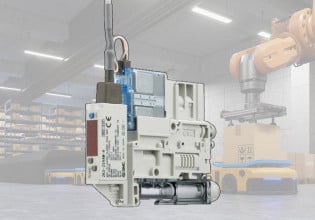Next-Level Multi-Factory Autonomous Process Control With Flexxbotics
Flexxbotics moves towards the era of the ‘smart factory’ with the release of a software solution that provides autonomous control, communication, and coordination of robotic fleets across factories.
Flexxbotics announced the release of the most recent version of the multi-factory-scalable autonomous process control solution that enables enhanced robot machine tending operations for improved productivity, resource utilization, and profitability.
Customers can benefit from advanced analytics with a dashboard designed for tracking plant performance, robot production status, and key performance indicators. The Flexxbotics solution also provides in-line inspection and business system integrations (such as Siemens, SAP, and Oracle for in-depth process integration) for enhanced robotic production autonomy.

Flexxbotics provides a software solution for the control, deployment, and maintenance of robotic fleets at multiple sites. Image used courtesy of Flexxbotics
Greater Autonomy
The latest release of Flexxbotics’ solution employs a hybrid approach to enhancing interoperability between automated industrial equipment, robots, inspection systems, and information technology systems.
Interoperable systems save money on implementation and maintenance because they require less custom integration effort and can utilize the infrastructure already in place. Systems compatible with one another can adjust to shifts in production demands, such as adjustments to production volumes or product designs. Production procedures can be more responsive and nimble because of this flexibility.
Autonomous process control (APC) systems employ intelligent devices and critical strategies to provide real-time data acquisition and data-driven decision-making. Sensors could be described as the system's nose, eyes, and ears, gathering data on various parameters such as temperature, vibration, flow rate, and pressure, which are then analyzed by the control system. Advanced process analytics (APA) and model predictive control (MPC) are two strategies employed to enable data-driven decisions concerning the adjustment of process parameters to optimize operations in real time and reduce downtime.
While MPC focuses on the mathematical modeling of processes to make predictions and calculate the most efficient modifications, APA relies on machine learning to identify relational patterns in sensor data. Both approaches aid in advancing the quality and efficiency of production processes.
APC is important for freeing workers from mundane, time-consuming tasks (and allowing them to spend time on higher-value tasks), reducing resource waste, reducing downtime (by implementing self-correction and predictive maintenance), improving product quality, and enhancing performance.
‘Closed-loop Autonomy’ and Advanced Analytics
Flexxbotics’ latest solution integrates in-line inspection of robotic work cells, processing automated inspection results for parts and running statistical process control (SPC) in real-time. Robots are instructed to perform rework and pick out parts that do not meet desired specifications. The solution also enables automatic updates to CNC machine programs.
Flexxbotics provides an overview of its latest solution for robot-driven manufacturing. Video used courtesy of Flexxbotics
In-line inspection equipment includes lasers, vision systems, probes, coordinate-measuring machines, and lasers. Robots use captured inspection data to execute changes in CNC programs concerning tool wear, process changes, and more.
The latest Flexxbotics solution facilitates IT integration, supporting existing systems such as ERP/MRP, MES, and IIoT. It also includes updated analytics dashboards for in-depth production evaluation and expanded Representational State Transfer API capabilities.
Flexxbotics' solution is accessible through Android, iOS, and Windows devices (such as smartphones and tablets) and users can customize robotic fleet deployment across a single plant or multiple plants without causing unnecessary disruption.






